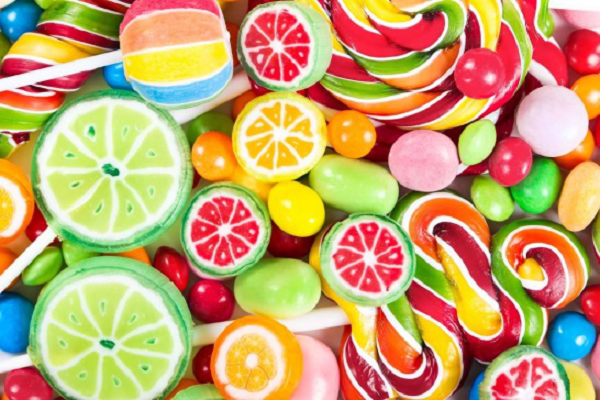The human tongue has a range of specific taste sensation neural receptors called taste receptors which are organized mainly as papillae on the tongue. When stimulated by chemicals, natural or synthetic, organic or inorganic, cations or anions, the receptors send signals to the brain which interprets the stimulations as sweet, bitter, sour, salty, and savory (unami, meaty taste). For examples, cations such as Na+ present in the table salt evoke the salty taste, and H+ presents in acids evokes a sour taste. Organic compounds such as sugars, dextrins and glycerol result in sweet taste, glutamate results in savory taste, while many toxic compounds such as nicotine, morphine, caffeine, quinine, etc. result in bitter taste. The sensation of tastes is an evolution trait for defense against poisons (normally evoke bitter taste), and for allowance of nutrients intake (normally evoke sweet or savory taste).
Sugar is a natural sweetener as well as a nutrient consumed in vast quantity around the world. It is one of the major calorie intakes by humans. Over consumption of sugar often leads to obesity and other related medical conditions. High blood sugar level (hyperglycemia) is a manifestation of the disease diabetic mellitus; if not managed properly, it could lead to a range of medical complications. To combat these medical conditions, high potency Sweeteners with no calorie or low calorie intake are often being used to substitute sugar. Proper control of calorie intake, coupled with the use of these sugar substitutes has been very effective in managing the medical conditions.
Besides the medical indications, using sugar substitutes brings the economic benefit of lowering the cost of many foods and consumer products, from soft drinks to cakes, pasties, and even toothpastes.
A variety of chemical compounds, natural or synthetic, can evoke sweet taste, but not all of them are safe (for example lead acetate has a sweet taste but it is extremely toxic), nor are sweet taste specific (for examples, many of synthetic sweeteners can also evoke other senses of taste such as bitterness or metallic sensation). Therefore, selection of the right sweetener for a specific use depends not only on the cost, but also more importantly on the health and safety, the sweetening potency, the effectiveness under various physical conditions such as cooking temperature (heat stability) and pH, as well as other unwanted tense of tastes of the sweetener.
At Sunshine Biotech, we have the expertise and technical know-hows to help you make the right selection for the right use.
Sweeteners Artificial Sweetener,Stevia Liquid,Aspartame Powder,Neotame Powder Nanjing Sunshine Biotech Co., Ltd , https://www.sunshine-bio.com


Recognition of counterfeit agricultural machinery
At present, the varieties of agricultural machinery on the market are very complicated, and counterfeit products are inevitably flooded with them. The quality of agricultural machinery will directly affect the vital interests of the majority of farmers. Therefore, it is incumbent to crack down on counterfeit agricultural machinery products. The following are several methods for identifying counterfeit and inferior agricultural machinery products for reference. First, look at the identification of farm machinery products that are fraudulently used and falsified the trademarks of other companies. The identification is a false identification. Usually more common in the structure is relatively simple, easy processing and manufacturing of the host and parts, such as rotary cultivator blades, grinder hammers, sieves, shaft pieces, bolts and so on. These products differ greatly in appearance, size, paint color, etc. When purchasing, you can use multiple samples to compare with the authentic control, weighing and other methods to identify. Second, look at the packaging of fraudulent use of other company's name, packaging, decoration is a fake package. This type of counterfeit products uses spare parts for agricultural machinery, such as connecting rods, crankshafts, valves, and injectors of diesel engines. Therefore, when choosing a farmer's hand, it is necessary not only to look at the packaging, but also to look at the product's technical documentation and the appearance and color of the product. If necessary, ask for a product identification certificate, or take a sample control and do the test. Third, look at the certificate of some enterprises, the product promotion license, production license, product certification, award certificate, etc. paste on the uncertified products, fake award-winning products, induce and deceive users. When purchasing products, the farmer's hand must check the relevant certificates of the products, and if necessary, consult the relevant departments to find out and then purchase. Fourth, look at advertising Some companies first to their own products to hang "high-tech", "new technology", "new products" signs; second is to exaggerate the scope of application of products and sales; third is to exaggerate the use of products; The fourth is to use advertising words to remind users to identify fake and anti-fake phrases and defraud users' trust. In fact, the quality of these products is often not guaranteed. When purchasing, do not listen to the words of the enterprise and the distributor, and remember to ask the company and the distributor for the relevant quality certification documents and check the product carefully.